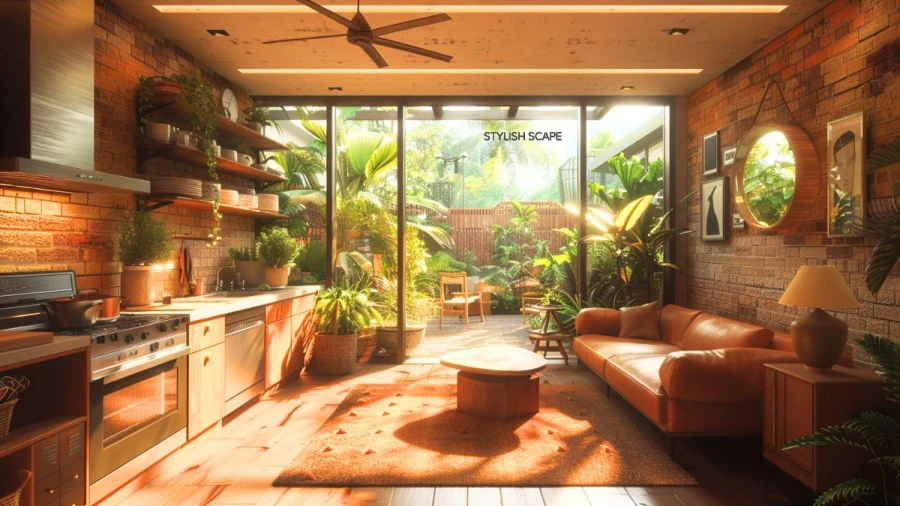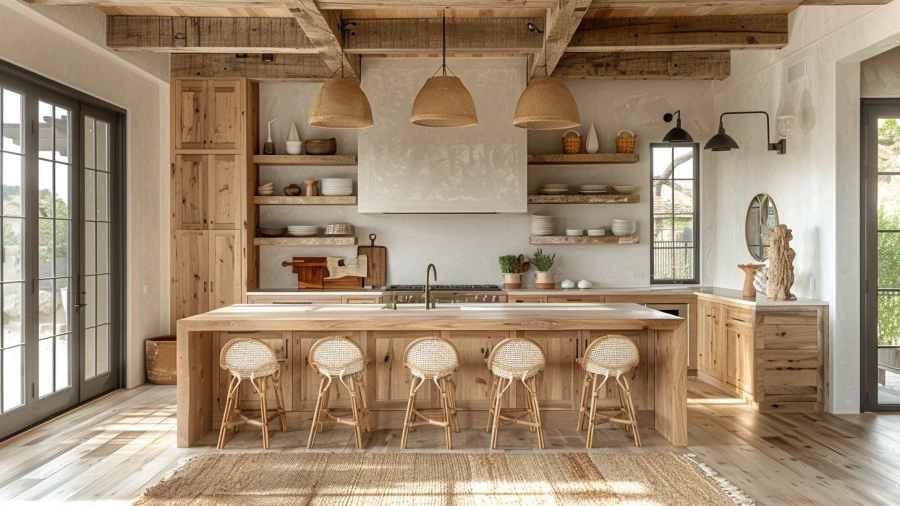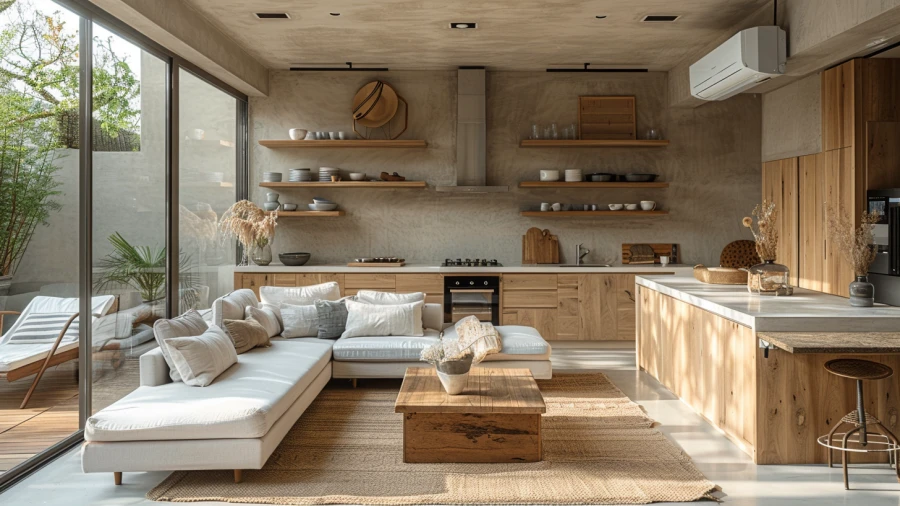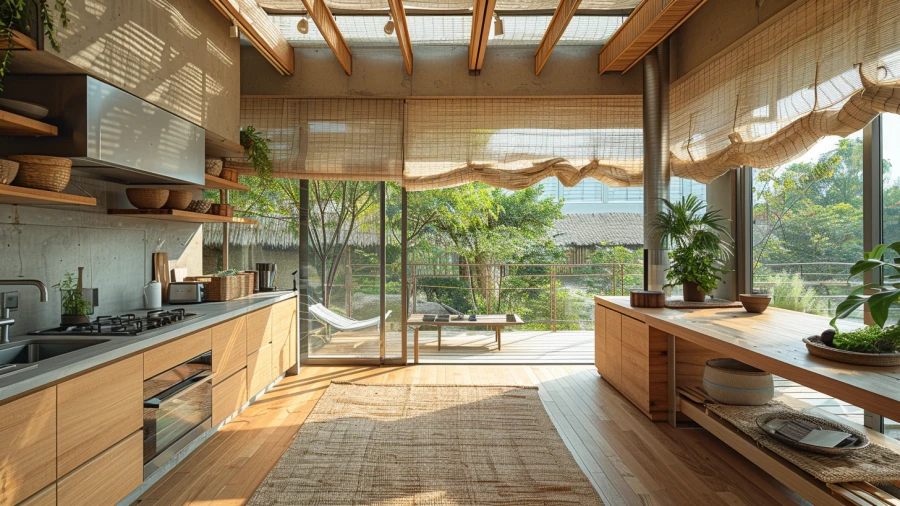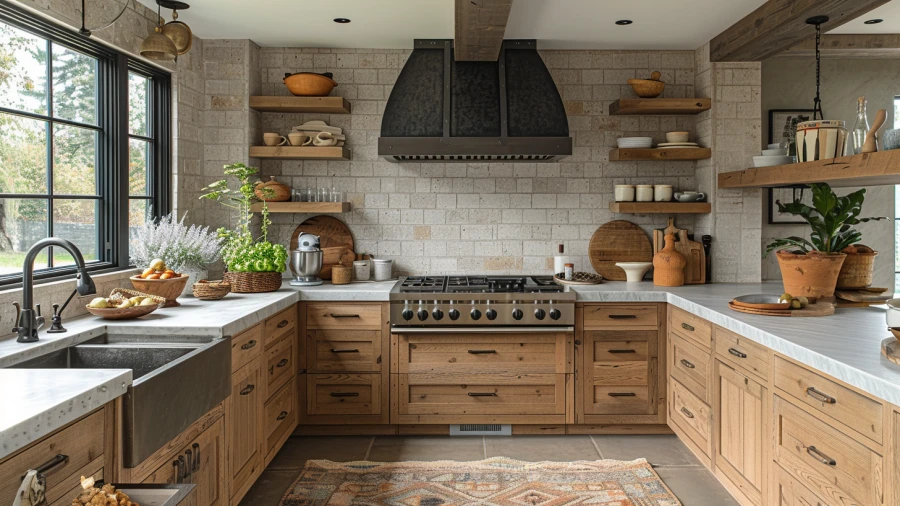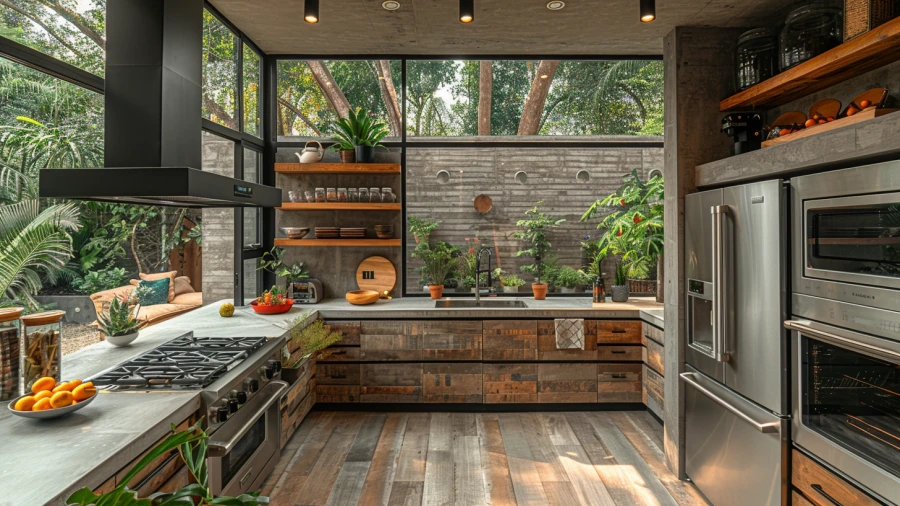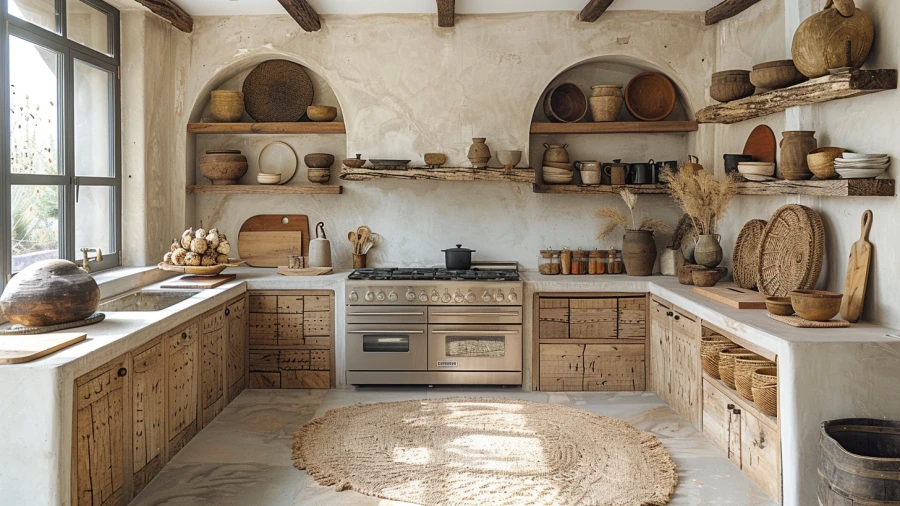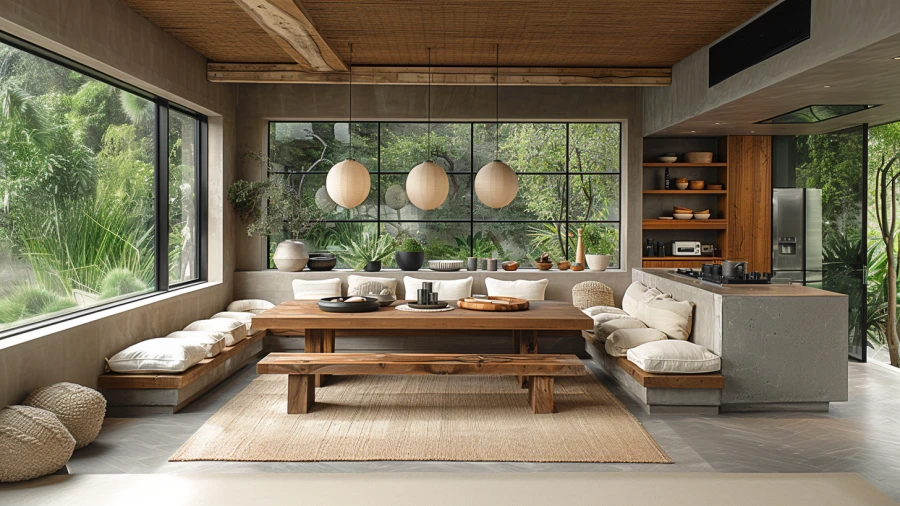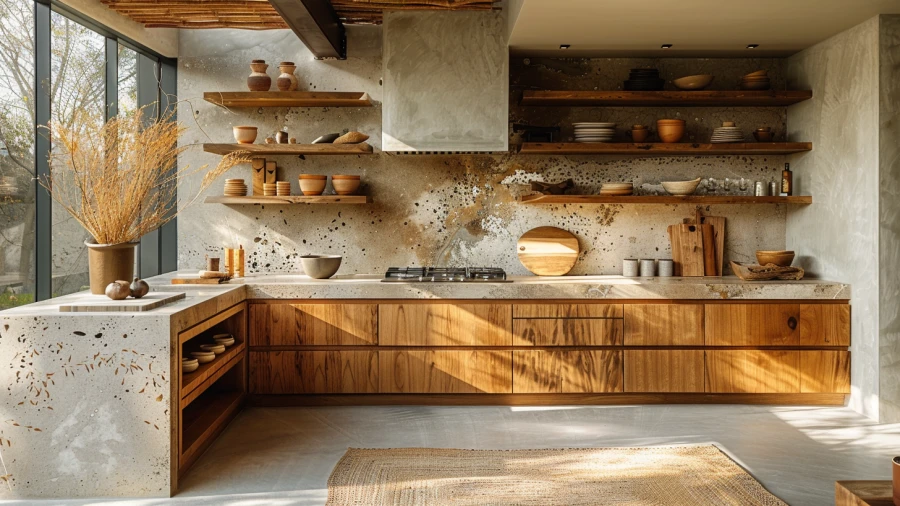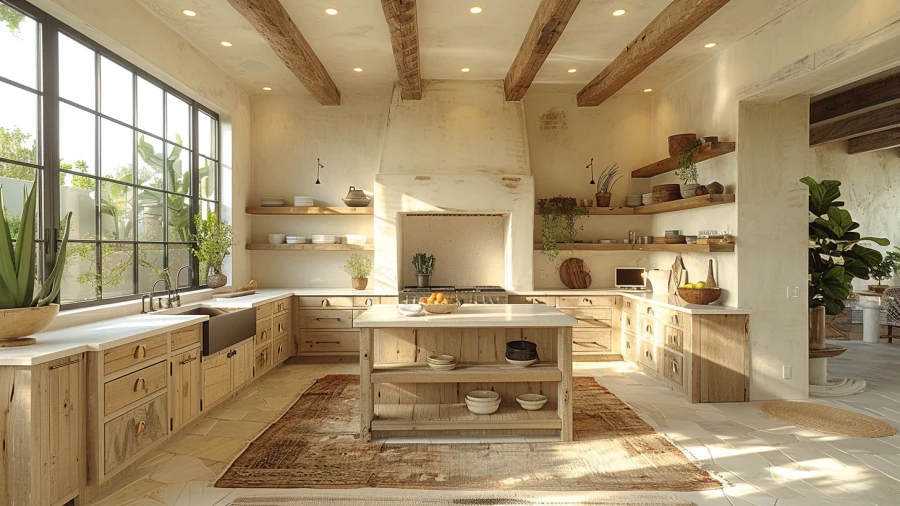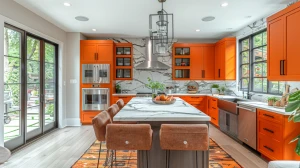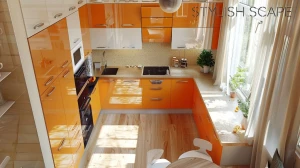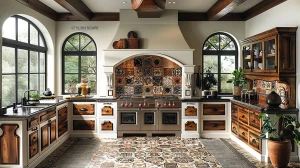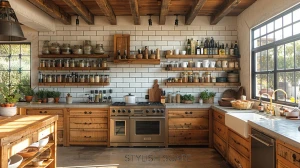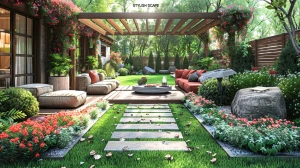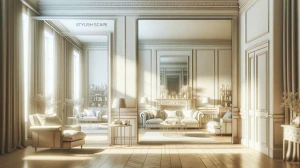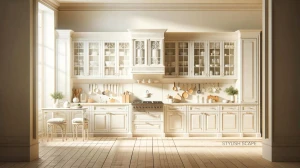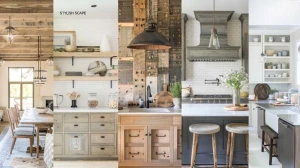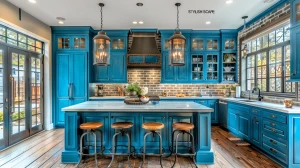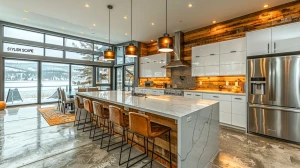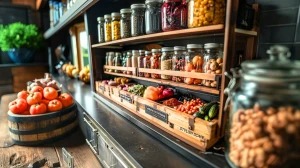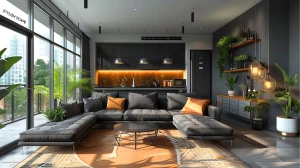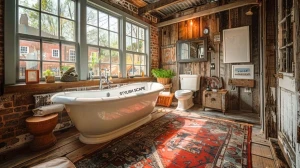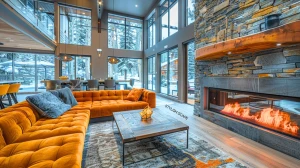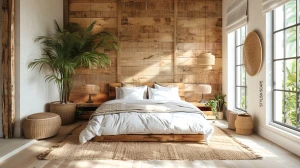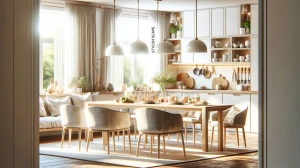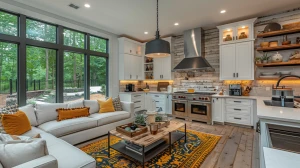
10 Stylish Japandi Kitchen Concepts for Your Home
Explore a collection of ten meticulously curated Japandi kitchen concepts harmonizing form and function, poised to elevate your culinary space with understated sophistication.
by Abinaya
Updated Feb 27, 2024
On This Page
In the realm of interior design, the fusion of Japanese minimalism and Scandinavian simplicity has birthed a captivating aesthetic known as Japandi. This harmonious blend effortlessly marries the clean lines and functional elegance of Scandinavian design with the serene, nature-inspired elements inherent in Japanese style. Nowhere is this fusion more strikingly showcased than in the heart of the home—the kitchen.
In this collection, we unveil ten meticulously curated Japandi kitchen concepts that seamlessly integrate form and function, promising to transform your culinary space into a sanctuary of understated sophistication. Each concept within this compendium is thoughtfully crafted to embody the core principles of Japandi design, emphasizing simplicity, warmth, and timeless elegance.
From sleek, minimalist cabinetry to organic textures and natural materials, these kitchens exude an air of tranquility while remaining highly practical and efficient. Whether you're drawn to the soothing earthy tones reminiscent of Japanese aesthetics or the clean, uncluttered lines synonymous with Scandinavian design, these ten concepts offer a wealth of inspiration to elevate your kitchen to new heights of style and functionality.
1. Natural Wood Accents
Incorporating natural wood accents into your Japandi kitchen design adds warmth and texture, essential elements of both Japanese and Scandinavian aesthetics. Opting for light-toned woods like oak, ash, or birch helps maintain the airy and serene atmosphere typical of Scandinavian design while echoing the natural materials favored in Japanese interiors. Consider utilizing wood for cabinetry, countertops, and flooring to create a cohesive look throughout the space.
To enhance the Japandi vibe further, choose wood with subtle grain patterns and minimalistic finishes that exude simplicity and sophistication. This integration of natural wood not only adds visual interest but also establishes a connection to nature, fostering a sense of tranquility and balance in the kitchen environment.
2. Minimalist Cabinetry
Minimalist cabinetry lies at the core of Japandi kitchen design, embodying the clean lines and clutter-free ethos of both Japanese and Scandinavian styles. Opt for sleek, handleless cabinet doors and drawers to achieve a seamless and uncluttered look that emphasizes functionality and simplicity. Matte finishes in neutral hues like white, light gray, or soft pastels contribute to the serene ambiance characteristic of Japandi interiors while allowing other design elements to take center stage.
Additionally, consider incorporating integrated storage solutions to maximize space efficiency and keep kitchen essentials neatly tucked away. By embracing minimalist cabinetry, you not only create a visually appealing backdrop for your kitchen but also cultivate a sense of calm and balance that resonates with the Japandi philosophy.
3. Nature-Inspired Accents
Infuse your Japandi kitchen with nature-inspired accents to evoke a sense of harmony and connection to the outdoors. Consider incorporating elements such as potted plants, fresh herbs, or small indoor gardens to bring a touch of greenery into the space. Choose planters and vases in simple, organic shapes and neutral colors to complement the minimalist aesthetic of the kitchen.
Additionally, you can introduce natural materials like rattan, bamboo, or jute through decorative items such as woven baskets, placemats, or pendant light fixtures. These nature-inspired accents not only add visual interest but also create a calming and rejuvenating atmosphere that enhances the overall well-being of the space.
4. Natural Light
Ample natural light is a hallmark of Japandi kitchens, enhancing the sense of spaciousness and connection to the outdoors. Consider incorporating large windows, skylights, or glass doors to maximize natural light exposure and create a bright, inviting atmosphere. To maintain privacy and diffuse harsh sunlight, opt for sheer curtains, blinds, or sliding screens made from traditional Japanese materials like rice paper or bamboo.
By harnessing the transformative power of natural light, you infuse your kitchen with a sense of warmth and vitality, echoing the reverence for nature central to both Japanese and Scandinavian design principles.
5. Textured Backsplash
Introducing a textured backsplash into your Japandi kitchen design adds depth and visual interest while complementing the clean lines of minimalist cabinetry. Choose materials such as subway tiles, natural stone, or ceramic mosaic in earthy tones and matte finishes to maintain harmony with the overall aesthetic. The texture of the backsplash adds a tactile dimension to the space, inviting touch and creating a sense of warmth.
Additionally, consider opting for irregular patterns or subtle variations in color to evoke the organic beauty found in both Japanese and Scandinavian landscapes, further enhancing the connection to nature within your kitchen.
6. Mix of Materials
Experimenting with a mix of materials in your Japandi kitchen design allows you to create a layered and dynamic space that reflects the fusion of two distinct design philosophies. Combine elements such as concrete, stainless steel, and glass to add contrast and visual intrigue while maintaining a sense of balance and harmony. For example, you might pair sleek stainless steel appliances with concrete countertops and glass pendant lights to create a modern yet inviting atmosphere.
By juxtaposing industrial-inspired materials with natural textures and finishes, you create a space that celebrates the interplay between tradition and innovation, echoing the spirit of Japandi design.
7. Functional Artwork
Integrate functional artwork into your Japandi kitchen design to add personality and flair while serving a practical purpose. Consider incorporating handmade ceramics, artisanal pottery, or sculptural objects that double as kitchen tools or utensil holders. Choose pieces with clean lines, subtle textures, and muted colors to complement the minimalist aesthetic of the space.
Hang artwork strategically on walls or display it on open shelves to create visual focal points that enhance the overall ambiance of the kitchen. By integrating functional artwork into your design, you elevate the space beyond mere functionality, transforming it into a curated gallery that reflects your unique taste and style.
8. Integrated Dining Area
Integrating a dining area into your Japandi kitchen encourages social interaction and creates a cohesive flow between cooking and dining spaces. Choose a minimalist dining table and chairs in natural wood tones or neutral colors to complement the overall aesthetic of the kitchen. Consider incorporating built-in bench seating or banquettes to maximize seating capacity while optimizing space efficiency.
Enhance the dining area with soft textiles such as cushions, throws, and placemats in muted earthy tones to add comfort and warmth. By seamlessly blending cooking and dining areas, you create a multifunctional space that fosters connection and conviviality, reflecting the inclusive and communal spirit of Japandi design.
9. Open Shelving Display
Incorporating open shelving into your Japandi kitchen design allows you to showcase curated collections of ceramics, pottery, and cookware while adding visual interest and personality to the space. Opt for floating shelves in natural wood or metal finishes to maintain the clean and uncluttered look characteristic of Japandi design. Arrange items thoughtfully, following the principles of wabi-sabi, to celebrate imperfection and embrace the beauty of everyday objects.
Mix and match different textures and materials to create a curated yet eclectic display that reflects your personal style and interests. By incorporating open shelving into your kitchen design, you not only optimize storage space but also create a focal point that sparks conversation and invites exploration, enhancing the overall aesthetic and functionality of the space.
10. Neutral Color Palette
Opt for a neutral color palette in your Japandi kitchen to create a calming and cohesive atmosphere that reflects both Scandinavian and Japanese design influences. Choose hues such as soft whites, muted grays, warm beiges, and earthy tones like sage green or ochre. Incorporate these colors into your cabinetry, countertops, walls, and decor elements to maintain a sense of unity and balance throughout the space.
By sticking to a neutral color scheme, you create a timeless backdrop that allows other design elements to shine while fostering a serene and inviting environment conducive to relaxation and socialization.
